

Manufacturer's Specifications:
FM Tuner Section:
Usable Sensitivity: 10.8 dBf; 1 .9 µV, 300 ohms.
50-dB Quieting: Mono, 15 dBf; stereo, 37 dBf, 39 µV, 300 ohms.
S/N Ratio: Mono, 90 dB at 85 dBf; stereo, 85 dB at 85 dBf.
Mono THD: Wide, 0.03 percent at 100 Hz, 1 kHz, and 10 kHz; narrow, 0.05 percent at 1 kHz.
Stereo THD: Wide, 0.05 percent at 100 Hz and 1 kHz, 0.1 percent at 10 kHz; narrow, 0.5 percent at 1 kHz.
Capture Ratio: Wide, 1.0 dB; narrow. 2.5 dB.
Selectivity: Wide, 40 dB: narrow, 85 dB.
AM Suppression: 65 dB.
I.f. Rejection: 80 dB.
Subcarrier Rejection: 70 dB.
Spurious Rejection: 60 dB.
Muting Threshold: 25.2 dBf, 10 µV, 300 ohms.
Stereo Separation: Wide, 55 dB at 1 kHz, 48 dB at 100 Hz and 10 kHz.
AM Tuner Section:
Sensitivity: 10 µV, 300 µV/m, ferrite antenna.
Selectivity: Wide, 10 dB; narrow, 50 dB.
S/N Ratio: 50 dB.
Image Rejection: 60 dB.
I. f. Rejection: 80 dB.
General Specifications
Audio Output: 650 mV. FM, 100 percent modulation, 200 mV, AM, 30 percent modulation.
Power Requirements: 1 20 V, 60 Hz.
Dimensions: 161 in. (41.9 cm) W x 2 1, in. (6 0 cm) H x 15 in. (38.1 cm) D.
Weight: 9 lbs , 15 oz. (4.5 kg)
Price: $425 00

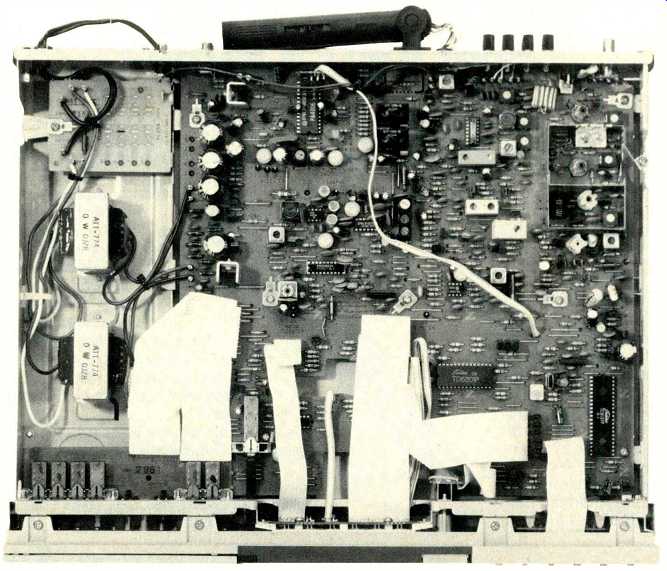
Suddenly, several of the major tuner manufacturers (or at least two of them, so far) have discovered how to make frequency synthesizer FM/AM tuners that do not sacrifice performance in return for tuning accuracy and ease of tuning. Readers may recall our April 1981 Equipment Profile concerning a Sony tuner which accomplished this hitherto unrealizable feat. Now Pioneer has done it too, and the raves that we gave the tuner from the competition apply to Pioneer's F-9 in just about equal measure.
In at least one way, Pioneer has even gone beyond its competition. The F-9 features wide and narrow i.f. bandwidth positions; useful for those situations where the listener lives in a crowded metropolitan area where station frequencies are so close to each other that a wideband i.f. system, while ideal for low-distortion stereo FM reception, may well lead to audible adjacent and alternate-channel interference.
For all its tuning facilities and special features, the front panel of the F-9 is simple and clean looking. Less often used switches are hidden behind a small swing-down door at the left end of the panel. These controls include a record-calibrate switch (which delivers a tone at 330 Hz, equivalent to 50 percent modulation in FM, at the outputs), wide and narrow AM and FM i.f. buttons (yes, the AM circuitry also has selectable i.f. bandwidth), "up" and "down" tuning buttons, a memory button (which is used when entering favorite AM or FM station frequencies into any of the six available preset memory positions), and an auto/manual tuning mode selector. When the auto mode is chosen, touching the up or down tuning buttons causes the tuner to scan until a signal is intercepted. In the manual mode, touching these but tons alters frequency in 100-kHz increments (9 or 10 kHz in the AM mode). My only thought about this control layout is that the up and down tuning buttons might have been better off on the normally exposed surface of the front panel, since, in many areas of the U.S., there are so many listenable FM signals (and AM ones, for that matter) that six "memorized" settings may not be enough for most listeners, who will have to get behind that door panel to use the scanning or manual tuning modes.
The six station preset buttons are located at the right end of the panel, while the center third of the panel is largely dedicated to a series of illuminated displays, AM and FM selector buttons, and the power on/off switch. A digital readout of tuned-to AM or FM frequency is augmented by "AM" and "FM" lights, stereo and multipath indicator lights, a five-I.FD signal strength indicator, and 12 tiny windows (six for AM and six for FM) into which can be slipped the frequencies of the corresponding favorite stations which have been permanently stored in the tuner's "memory" circuits. All possible AM and FM channel frequencies are supplied on four accessory cards so that the user can insert appropriate notations in the little windows on the front panel.
These windows are numbered 1 through 6 (for AM and FM), corresponding to the similarly numbered station preset buttons at the right.
The rear panel of the F-9 is equipped with a 75-ohm coaxial connector and 300-ohm FM antenna terminals, external AM and ground terminals, a pivotable ferrite AM loopstick, the required pair of audio output jacks (whose output level is fixed), and a couple of farsighted features which you probably have not en countered before. The first of these is an AM stereo-out jack, which is basically a connection to a buffered AM i.f. stage. The jack is provided in anticipation of an FCC approval of one of several proposed systems for stereo AM broadcasting and would presumably accommodate stereo AM adaptor add-ons in the future. Another unusual feature on the rear panel is a slide switch which can be set for either 9-kHz or 10-kHz frequency steps when tuning the AM band. Much of Europe and Asia has already adopted the 9-kHz channel spacing, while the U.S., Canada, and the rest of the countries in this hemisphere continue to use channel assignments that are 10 kHz apart. However, at some future date we may also agree to change to a 9-kHz channel spacing system, and it would only be necessary to flick the switch on the back of the F-9 to allow the frequency-synthesized AM tuner section to tune in 9-kHz steps. Clearly, Pioneer has tried its best to offer a tuner that is obsolescence proof.
FM Section Measurements
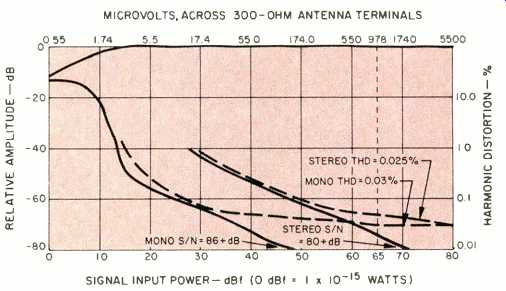
Fig. 1--Mono and stereo quieting and distortion characteristics, wide i.f.
setting.
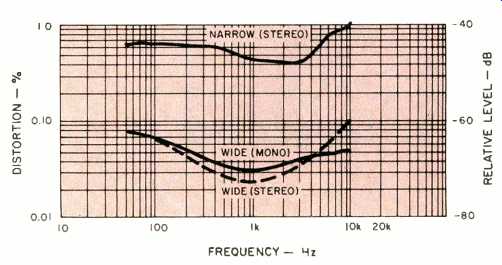
Fig. 2--Distortion vs. frequency, FM section.
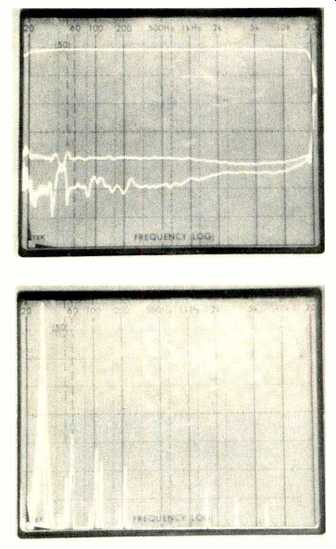
Fig. 3--Stereo FM frequency response and separation in narrow and wide i.f.
modes.
Fig. 4--Stereo FM crosstalk and distortion products in narrow i.f. mode.
Figure 1 shows the quieting and distortion characteristics of the FM tuner section of the F-9 when the bandwidth switch is set to the wide position. Again, our signal generator was not up to the task of measuring the 90 dB (at 85 dBf) of S/N claimed by Pioneer (nor, for that matter, is our standard graph form), but we have every reason to believe that it is quite true (I measured 86 dB, as low as my generator has ever gone) for mono reception.
Note that both for mono and stereo, the noise line hasn't begun to level off as we drop off the bottom of the graph! My stereo noise measurement capability also falls short of being able to verify the 85-dB S/N claimed by Pioneer, though again I suspect that the tuner easily reached that level of quieting, judging by the slope of the curve in Fig. 1.
The quieting characteristics of the tuner, in both mono and stereo, are essentially the same whether the tuner is placed in the wide or narrow modes. Distortion, however, increases in the narrow mode, as might be expected. Figure 2 is a plot of mono and stereo THD versus frequency in the wide mode (two lower curves) and of stereo THD in the narrow i.f. mode. It should be noted, however, that even in the narrow mode, THD remains low enough so as not to be audibly bothersome. But in the narrow mode, selectivity measured a very high 85 dB as claimed, high enough to preclude any interference from stations operating at frequencies close to the desired one.
Frequency response deviated from flat by no more than 0.2 dB at the high end (15 kHz), as can be seen from the upper trace of Fig. 3, Which also depicts stereo FM separation (two lower curves in Fig. 3) in the wide and narrow modes. The lower curve (best separation) was obtained when the tuner was operated in the wide mode, with separation readings of 52 dB at 1 kHz and at 100 Hz and 46 dB at 10 kHz. When the tuner was operated in the narrow mode, separation decreased but was still a relatively high 40 dB at mid-frequencies, 38 dB at 100 Hz, and an impressive 42 dB at 10 kHz.
More subtle forms of distortion arising in the FM section when it is operated in the narrow mode may be seen by examining Figs. 4 and 5. In Fig. 4, I operated the tuner in the narrow mode while modulating the signal generator with a left-only stereo signal at 5 kHz. This is represented by the tall spike at the left (the horizontal sweep in these two figures is linear from 0 to 50 kHz or 5 kHz per linear division). A second sweep, taken at the output of the unmodulated channel, shows the crosstalk component of 5 kHz (contained within the tall spike, lower in amplitude) plus a series of crosstalk distortion components and subcarrier components. Comparing the results obtained in Fig. 5 (tuner operating in the wide mode) with those of Fig. 4, it is easy to see how much cleaner the crosstalk components are when the tuner is operated in the wide mode, not to mention the higher stereo separation observed.
Spurious response rejection was more than 90 dB, much better than claimed. AM suppression measured 65 dB as claimed, while image, i.f., and subcarrier rejection measured 73 dB, in excess of 100 dB, and 72 dB respectively. Muting thresh old was set a bit higher than published specs suggested, at around 15 µV (28.7 dBf), and this point also corresponded to stereo switching threshold.
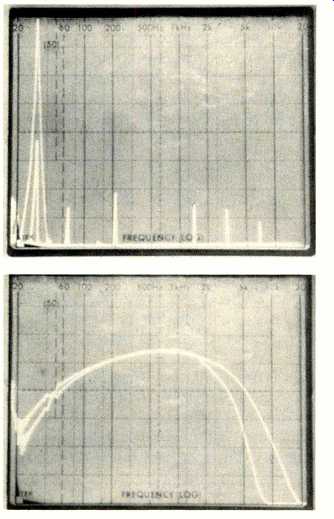
Fig. 5--Same as Fig. 4, but wide i.f. mode.
Fig. 6--AM frequency response in wide and narrow modes.
AM frequency response of this tuner was not unlike that of most tuners and receivers manufactured as "high fidelity" components: Not very good. However, this tuner at least has the advantage of being able to extend the high-end response slightly when the tuner is operated in the wide AM mode; it also has the ability to zero in on closely spaced stations (especially at night) when operated in the narrow mode. Frequency response is shown for both modes in Fig. 6.
Use and Listening Tests
The high quality and reception capability of this new Pioneer tuner is, of course, difficult to assess while listening to typical FM stations. Accordingly, the listening tests included a comparison of the sound of some audiophile records "transmitted" over my own closed-circuit setup to the F-9 versus the sound of these same records played directly over my reference component system. In addition, I did some listening to the single radio station in my area which continues to put out a first-rate signal: In both cases I was reminded of how good FM radio really can be. I suspect that when true digital audio program sources become available, and as more and more tuners such as the F-9 appear on the marketplace, more radio station operators will have to re examine their practices and, in most cases, improve them. With a tuner such as this new Pioneer F-9 and live or digitally recorded program sources, the weakest link in the FM chain is surely the radio station. And, best of all, this incredible tuner performance is available at a fraction of what the best non-frequency-synthesized performance used to cost just a few years ago.
-Leonard Feldman
=================
(Audio magazine, Aug. 1981)
Also see:
Pioneer Model TVX-9500 TV Audio Tuner (Equip. Profile, Nov. 1978)
Pioneer F-90 Tuner (Jan. 1984)
Pioneer TX-9500-II AM/FM Stereo Tuner (May 1977)
Pioneer Model TX-9100 AM/FM Stereo Tuner (Aug. 1973)
= = = =